Plant Profile Zinnia
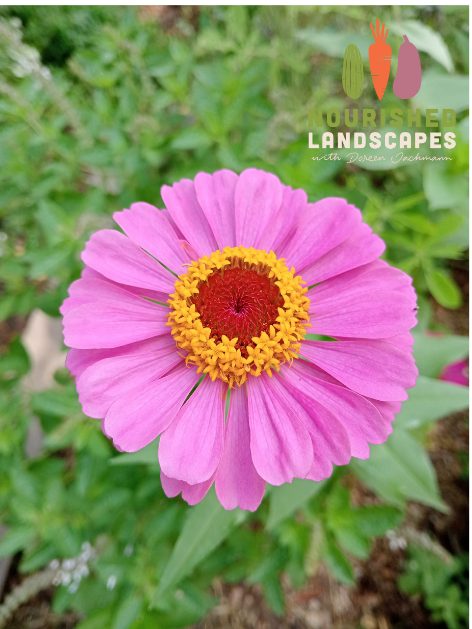
Plant Profile Zinnia (Zinnia spp.)
Common Names: Zinnia
Scientific Name: Zinnia spp.
Family: Asteraceae
Plant Type: Annual flowering plant
Physical Description
- Height: 30 cm to 1.2 m, depending on the variety.
- Spread: 30–45 cm.
- Leaves: Lance-shaped, bright green leaves arranged oppositely on stems.
- Flowers: Vibrant, daisy-like flowers in a range of colours, including red, pink, orange, yellow, purple, white, and multicoloured. Flowers have single, semi-double, or fully double petals.
- Roots: Fibrous root system, shallow but widespread.
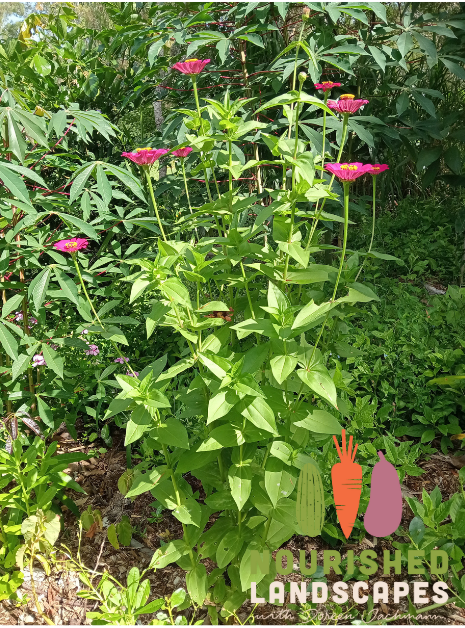
Zinnia self-sown on the edge of a food forest.
Habitat and Distribution
- Native Range: North and South America.
- Cultivation: Widely cultivated worldwide in gardens, including temperate and subtropical regions of Australia.
- Climate Zones: Temperate, tropical, subtropical
Growing Conditions
- Light: Prefers full sun (at least 6–8 hours per day).
- Soil: Grows best in well-draining, fertile soil with a pH of 5.5–7.5.
- Water: Moderate water needs; prefers consistent moisture but is somewhat drought-tolerant once established. Avoid overhead watering to prevent fungal issues.
- Temperature: Optimal growth occurs between 20–30°C. Sensitive to frost.
- Fertiliser: Benefits from light applications of balanced fertiliser or organic compost. Avoid excessive nitrogen, as it promotes leaf growth at the expense of flowers.
Uses in Permaculture
- Pollinator Attractor: Zinnias attract bees, butterflies, and other beneficial insects, improving pollination for nearby crops.
- Companion Plant: Beneficial when planted near vegetables such as tomatoes, squash, and beans, as they deter pests like aphids and whiteflies.
- Cut Flowers: Long-lasting blooms are ideal for fresh floral arrangements.
- Aesthetic Appeal: Brighten up garden beds, borders, and pathways with their colourful flowers.
- Seed Production: Seeds can be saved for future planting, making zinnias a sustainable choice for annual flower gardens. They do self-seed but not in an invasive way.
Propagation
- Seeds: Zinnias are easily grown from seeds.
- Sow seeds directly into the garden after the last frost or start indoors 4–6 weeks earlier.
- Cover lightly with soil (about 0.5 cm deep) and water gently.
- Germination occurs within 5–10 days in warm conditions.
Seasonal Care for the southern hemisphere
- Spring (September–November): Sow seeds in warm soil after the danger of frost has passed. Thin seedlings to maintain 20–30 cm spacing.
- Summer (December–February): Deadhead spent blooms to encourage continuous flowering. Water regularly during dry periods.
- Autumn (March–May): Harvest seeds for next season. In frost-free areas, zinnias may continue blooming.
- Winter (June–August): Not frost-tolerant; remove spent plants and prepare soil for spring planting.
Pests and Diseases
- Common Pests:
- Aphids, whiteflies, and spider mites can infest zinnias. Use insecticidal soap or introduce beneficial predators like ladybirds.
- Diseases:
- Powdery mildew, leaf spots, and root rot are common issues. Ensure good air circulation and avoid overhead watering to minimise these problems.
Harvesting and Maintenance
- Cut Flowers: Harvest blooms early in the morning when fully opened for the best vase life.
- Seed Saving: Allow flowers to dry on the plant. Once seeds mature and turn brown, collect them for storage.
Special Considerations
- Heat Tolerance: Thrives in hot climates, making it an excellent choice for Australian summers.
- Variety Selection: Dwarf varieties are ideal for borders and pots, while taller varieties suit cut flower production or background planting.
Zinnias are low-maintenance and versatile, making them an excellent choice for gardens of all types.
----------------------------------------------
About the Author
Doreen Jachmann from Nourished Landscapes has been providing permaculture services for over 10 years.
Doreen is passionate about helping people create sustainable and resilient landscapes.
Nourished Landscapes offer a variety of services, including:
* Permaculture design and installation
* Permaculture education, presentations and workshops
* Permaculture consulting
If you are interested in learning more about permaculture, please contact us today!
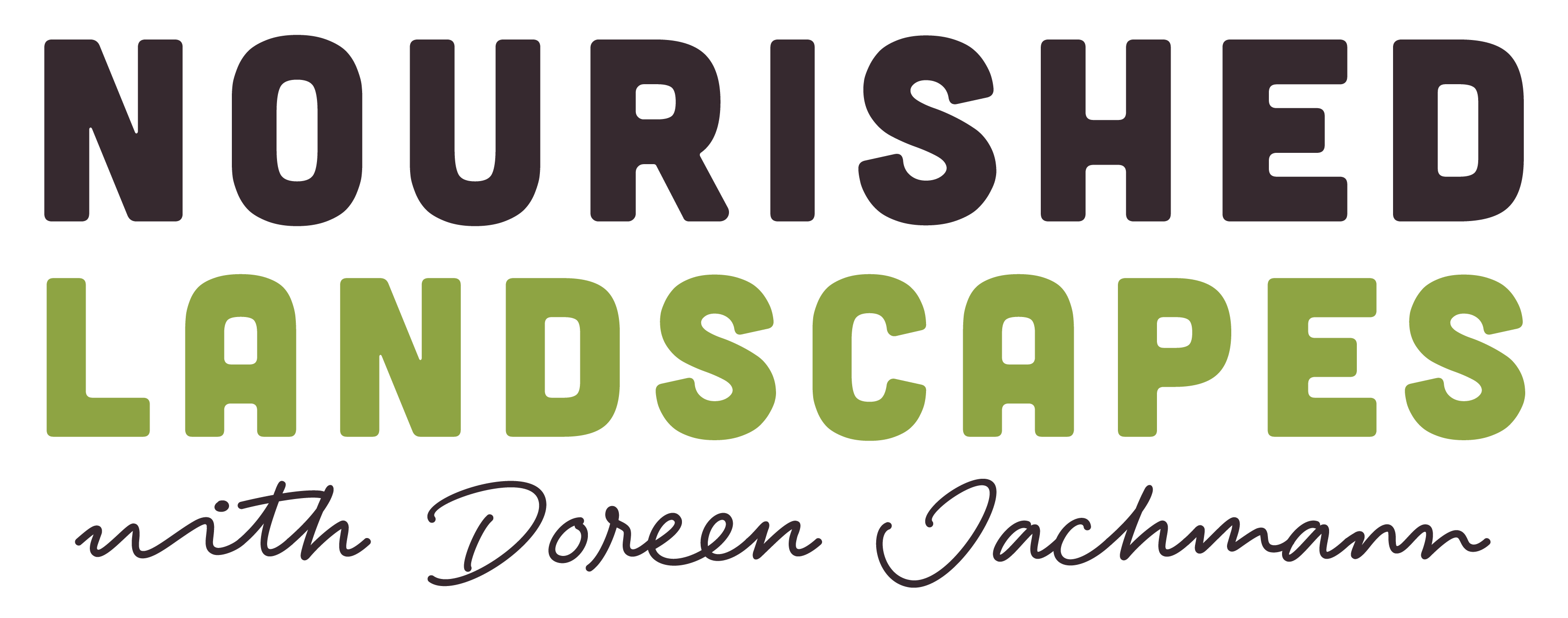
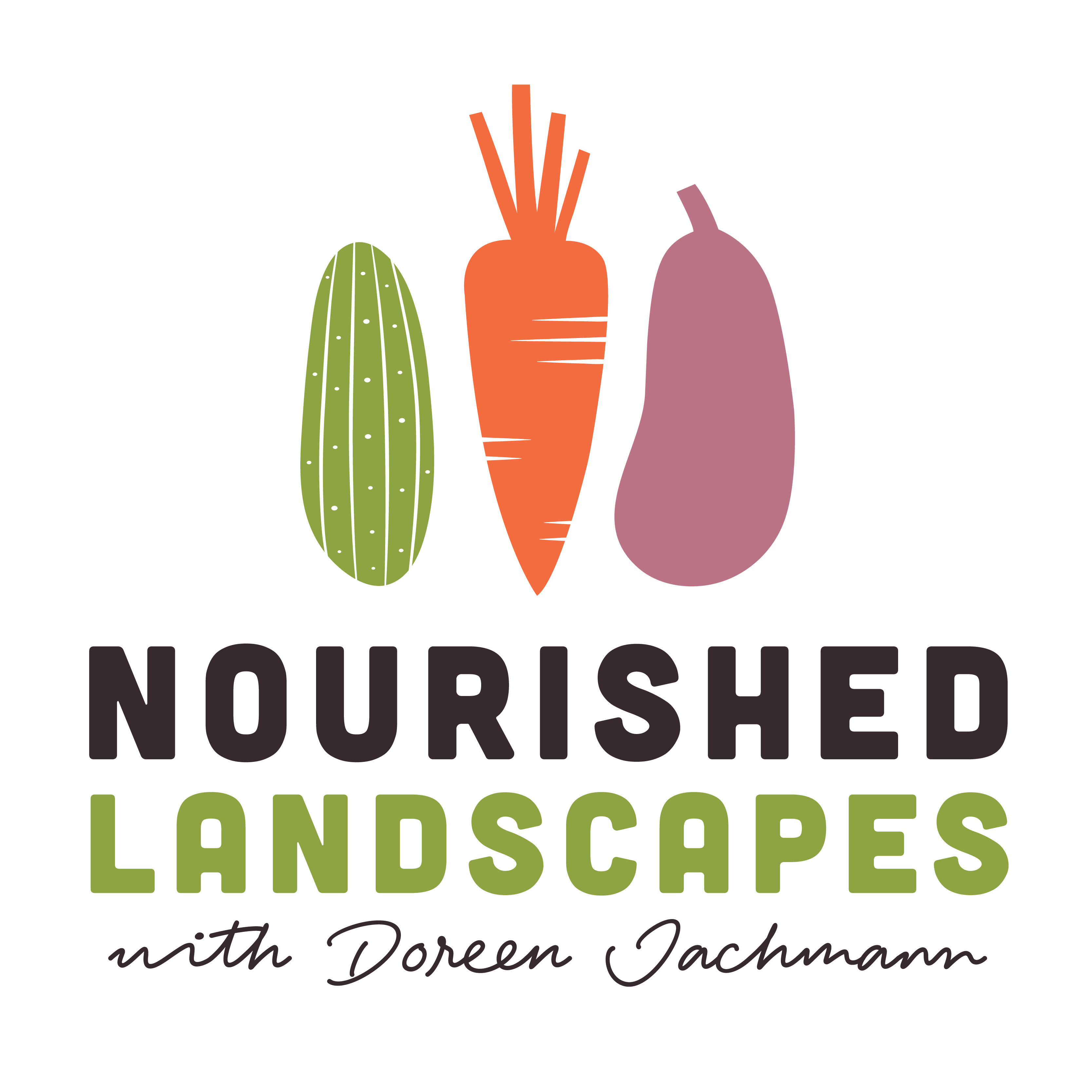
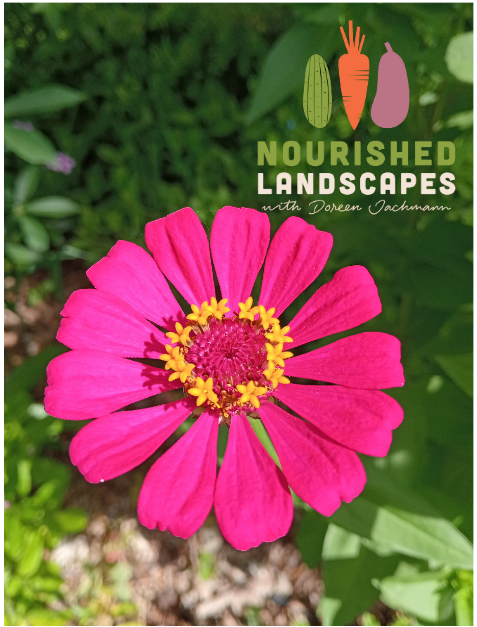
0 comments
Leave a comment
Please log in or register to post a comment